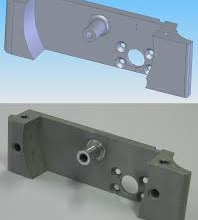
Cloud technology provides remote workers with access to business calling features without the need for hardware and onsite installation. Choose a provider that offers a comprehensive cloud package within your budget.
Auto-attendant and virtual receptionist tools allow callers to schedule a callback instead of waiting on hold. This improves the customer experience while ensuring agents can answer customer calls.
Cost-Effectiveness
Cloud solutions reduce the upfront expenses of hardware and software, and they work on a per-user basis instead of requiring a costly PBX server. This way, businesses can enjoy the latest business communication tools without committing large budgets and hiring IT professionals to maintain hardware.
Unified communication features bring calls, voicemails, instant messages, and video conferences under a single platform. This makes it easier for remote employees to work together as a team and stay in touch with clients and colleagues.
Additionally, most cloud phone systems provide international calling for free. They also allow employees to forward or transfer incoming calls to other devices during inactive hours and offer customer callback capabilities so customers don’t have to wait in line. They can even set up automated voicemails that notify them of new voicemail messages. Other useful cloud phone system features include adding an auto-attendant, implementing call settings, making call blasts, creating ring groups, and enabling on-demand or automatic call recording with searchable transcripts.
Scalability
Unlike traditional PBX phone systems that require upfront investment and expert installation, cloud phone systems are affordable monthly or yearly. They are also easier to maintain as they rely on virtual connections rather than hardware, so you can avoid paying extra money for repairs and hiring experts to perform the work. You click here to continue learning about the scalability of a phone system.
Remote teams can connect and collaborate with clients using a virtual PBX phone system that works over the internet without requiring additional hardware. It can also be integrated with your CRM to boost productivity and customer service.
A remote phone system typically has an online portal that offers features like auto-attendants, call routing, voicemail transcription, extension dialing, ring groups, and more. Additionally, it offers a smartphone app that enables remote or anyplace work for employees. You might provide local and toll-free numbers to make your customers feel like part of your company. You can also integrate the system with your CRM for better marketing and sales alignment.
Exceptional Customer Service
Remote teams must have a comprehensive communication system that works across all devices and provides seamless collaboration.
The best remote business phone systems can seamlessly integrate with CRM software to automate workflows and achieve marketing and sales alignment. Moreover, top providers will provide exceptional support available around the clock to ensure the system always functions as intended and troubleshoot any issues that may arise.
Mobility
Your team may benefit from enhanced features and unified communications capabilities with a cloud phone system, making keeping in touch more straightforward. Instead of relying on traditional on-premises telephone systems or a combination of PBX cabinets and individual smartphones, your remote team can access all your business call, chat, and videoconferencing options from any device with an internet connection.
Unlike traditional systems, which require an expensive hardware investment and an in-house IT team for maintenance, a top cloud provider will handle all updates and upgrades. This can free up your IT staff and allow them to focus on more pressing needs for your business.
The ability to route calls to additional devices, such as mobile phones or corporate mobiles, is another feature offered by a top cloud phone service. That means your team members can answer customer calls on the go, even if they’re out of the office for meetings or lunch breaks.




